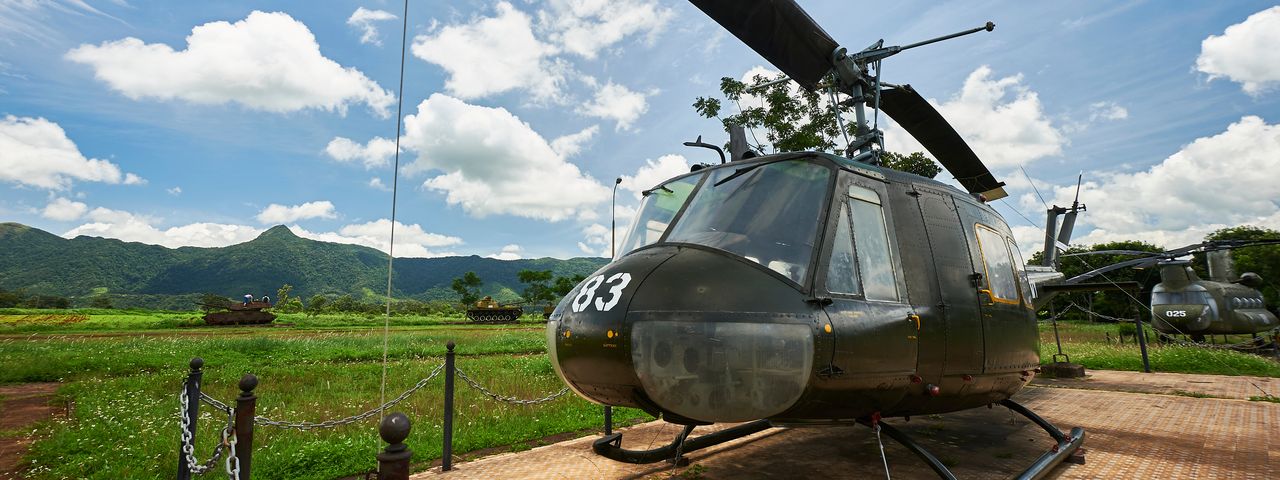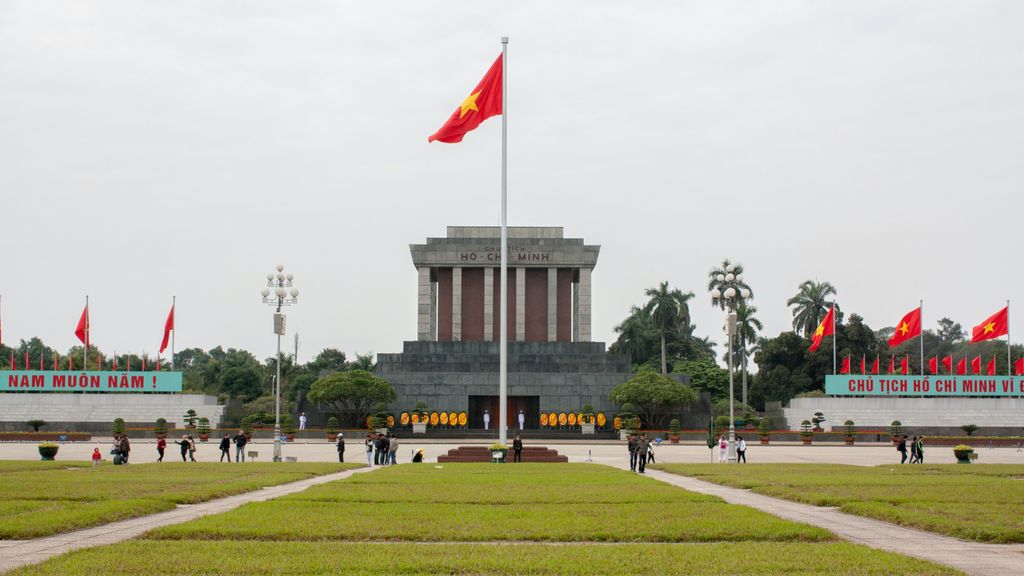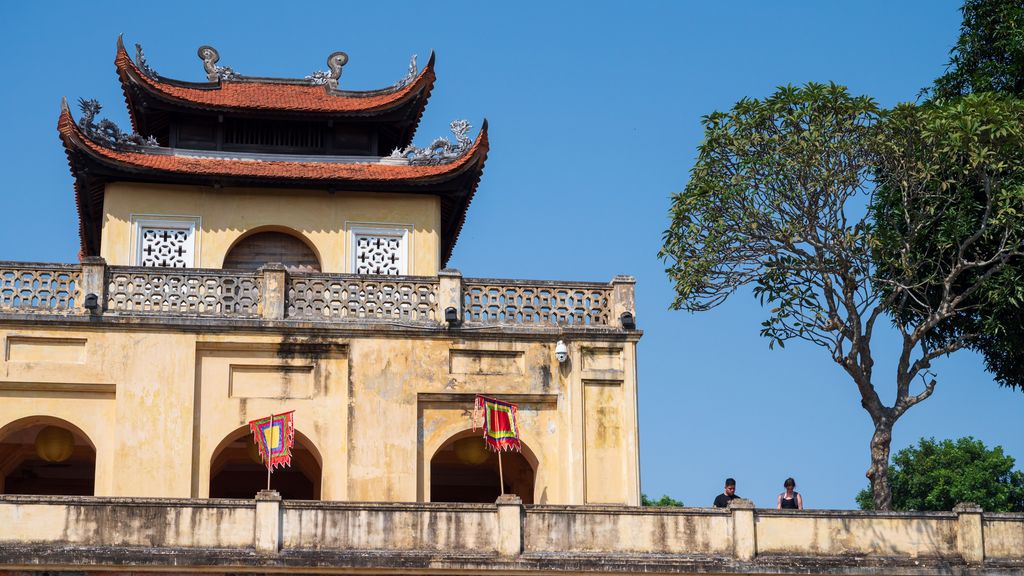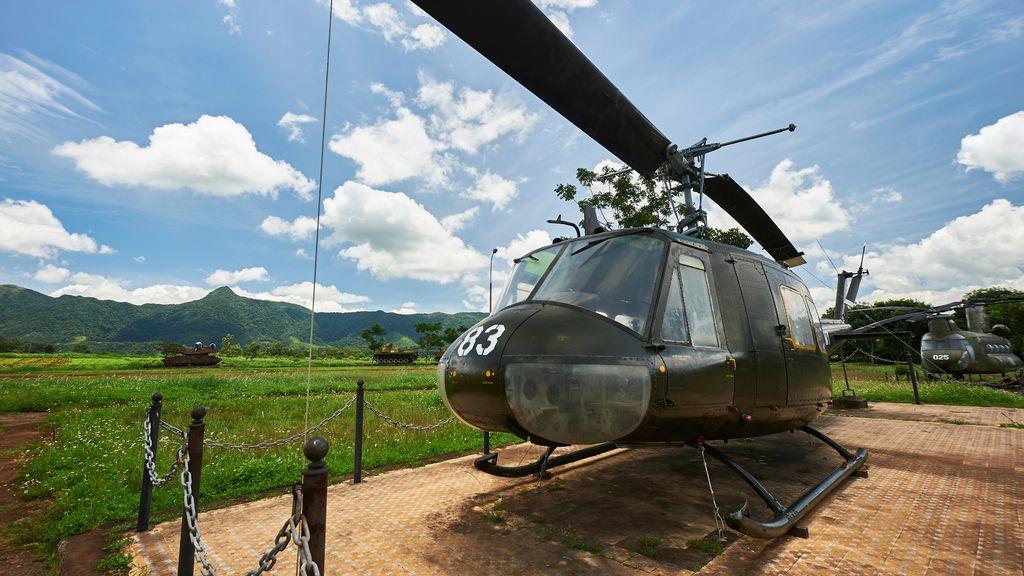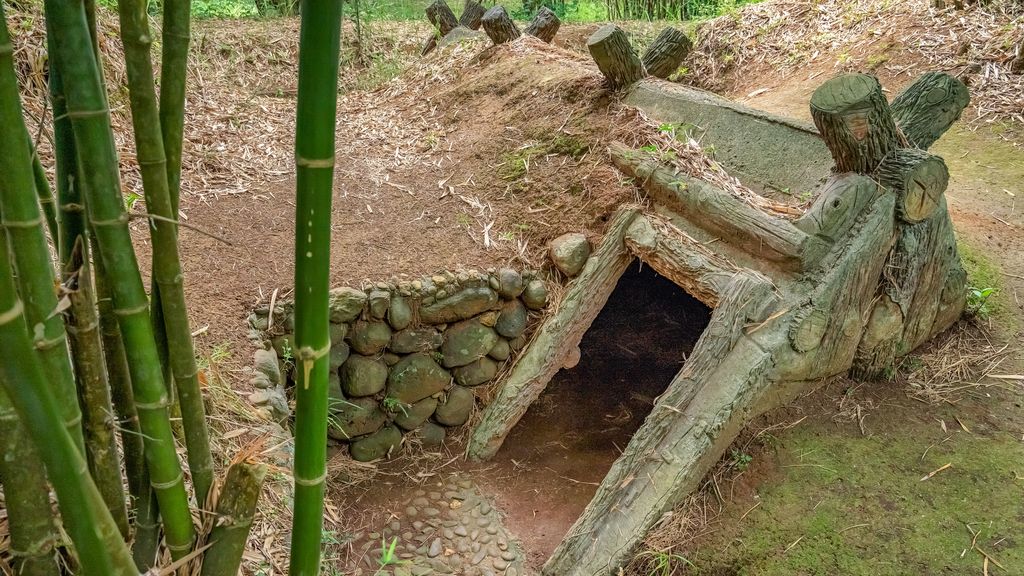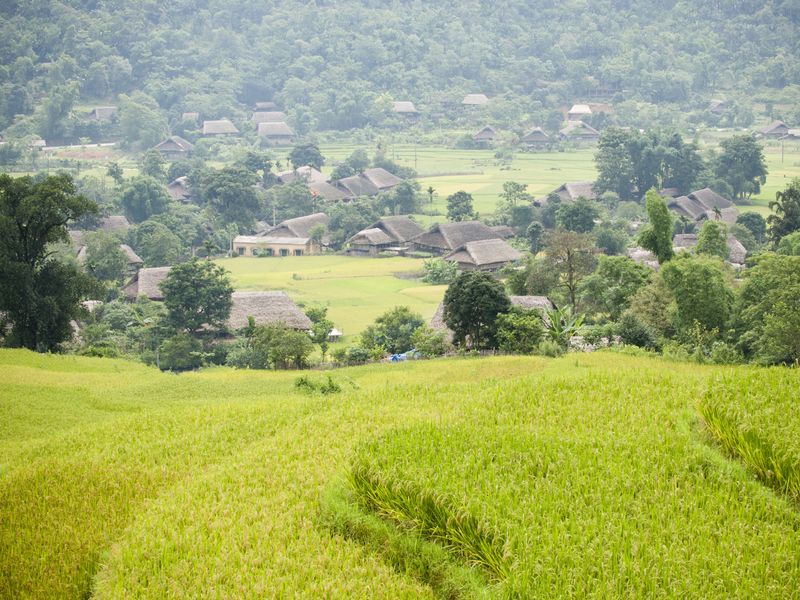Visit Historic Sites from the Vietnam War
Many visitors to Vietnam seek a deeper understanding of the events of the ‘American War’, and to view things from a different perspective. See the conflict through the eyes and lives of the North Vietnamese in the streets of Hanoi, and around the ‘Highway of No Joy’ that leads to the tunnels of Vinh Moc, and get a broader view of the impact of this turbulent and traumatic period.
Visit a selection of significant sites, including:
In Hanoi
Ho Chi Minh’s Mausoleum in the heart of Hanoi’s Ba Dinh Square.
The iconic Hanoi Flag Tower at Hanoi’s Army Museum.
The imperial remains of the Thang Long Citadel, where North Vietnamese military leaders coordinated resistance to America and the south.
The Hoa Lo Prison, grimly nicknamed the ‘Hanoi Hilton’ by American POWs.
In Quang Tri Province, central Vietnam
The sites of two major battles during 1968’s Tet Offensive at Khe Sanh and Lang Vei.
The well-preserved tunnels at Vinh Moc, built 25 metres under the ground.
Ho Chi Minh’s Mausoleum
Located in Ba Dinh Square, with a minimalist design that echoes the revolutionary leader’s simple tastes, the hushed and reverential air inside this building reflects the fact that his embalmed body lies in state within.
The mausoleum forms part of a larger complex that includes the august Presidential Palace, Ho Chi Minh's traditional and unassuming stilt house, and the Ho Chi Minh Museum. Also nearby is the One Pillar Pagoda - an 11th-century Buddhist Temple that looks like a lotus flower emerging from a pond - forming a striking juxtaposition to the stark mausoleum.
The Hanoi Flag Tower
Built in 1912 for military observation, this tower is a symbol of Vietnam’s resilience and endurance. Its original purpose was to display the national flag and act as a strategic vantage point to monitor the surroundings. Despite concerted bombing attempts, the tower survived the American War pretty much intact. Climb the spiral staircase to the top for panoramic views over the city.
Thang Long Citadel
Having served as the political centre of Vietnam for about 13 centuries, today the walled citadel showcases the foundations, relics, and remnants of the ancient capital, providing insights into Vietnam's rich history and architectural evolution.
As with so many historic sites, the citadel continued to be a living part of the city’s history for many centuries. Visit a building known as D67, a fortified underground bunker and command centre during the American War, to walk through the rooms, frozen in time, where the northern Vietnamese military leaders had their headquarters during the ‘American War’.
Hoa Lo Prison
The macabrely-nicknamed ‘Hanoi Hilton’ was originally built by the French in the late 19th century to detain Vietnamese political prisoners, before later being used by the North Vietnamese government to hold American prisoners of war.
Although much of the structure was demolished during the 1990s, some of the prison buildings still stand and have been converted into a museum. It now serves as a poignant reminder of the struggles and conflicts in Vietnam's history, representing the experiences of both Vietnamese revolutionaries and American prisoners during different periods.
Khe Sanh and Lang Vei
The site of two significant battles, these two former American military bases have become integral to the story of Vietnamese resistance.
Khe Sanh is associated with one of the most intense and pivotal battles during the American War, being under siege for six months during 1968. U.S. forces eventually withdrew from the base after one of the war's most protracted and grueling battles.
Just a few miles down the road, the Battle of Lang Vei is remembered for very different reasons. This Special Forces base was overrun by the North Vietnamese Army, during the night of February 6, 1968, in an intense battle that lasted just 90 minutes.
Vinh Moc tunnels
A testament to their construction, the tunnels at Vinh Moc (the underground bunkers where guerrilla fighters lived alongside local villagers and their families during the war) are remarkably well preserved.
At over 80 feet underground, and extending for 1.7 miles, around 60 families called these tunnels home during the conflict. The space here is not as compact as the famous Cu Chi tunnels in the south, so easier for visitors to walk around, but it still displays the extraordinarily claustrophobic conditions these families lived in. Explore sections of the underground complex, gaining insight into the remarkable resourcefulness and fortitude of the Vietnamese people during this time.
